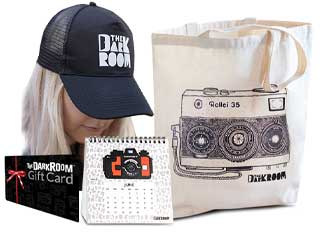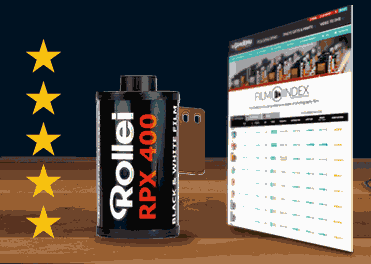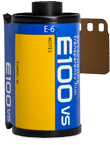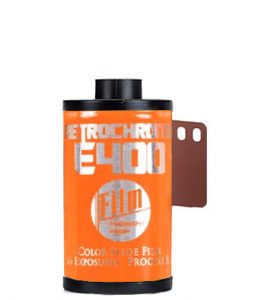Slide film [E-6], also known as reversal film, is a type of film that creates a positive image instead of negative images or negatives [C-41].
More on the differences between E-6 and C-41
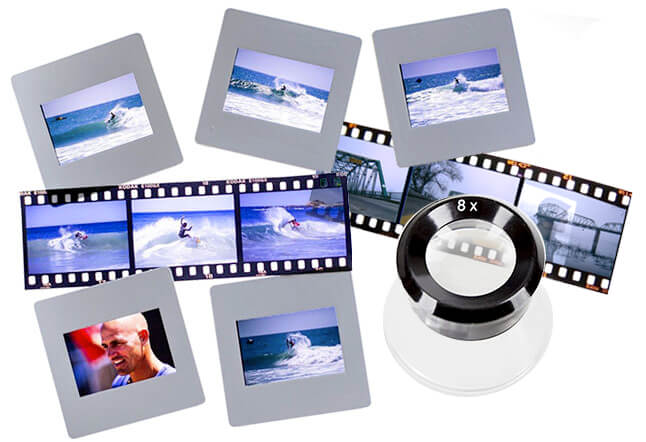
Slide film produces vibrant and rich colors that come closer to the actual colors and tones present during exposure. When processing film, you can choose to have the transparency mounted in a cardboard or plastic holder (The Darkroom uses plastic holders) for projecting is a slide projector.
These transparencies or diapositives (abbreviated as “diafilm”) come in sizes from 35mm, medium format film, and large format, such as 8×10 sheet film. Modern-day color reversal film is processed with E-6 processing. The major film brands for color reversal film are Kodak and Fuji. The ISO film speed of slide film is a typically slow film that results in extremely fine grains to produce sharper images.
What’s the Best Film?
The most comprehensive index of film types; characteristics, examples, and reviews.
|
|
Kodak Ektachrome 100Ektachrome comes in 35mm and 120. It’s known for its beautiful color and like most slide films, has a super fine grain, rich saturated color, and is great for daylight shooting. For being slide film it has decent exposure latitude and does well with portraiture as well as landscapes. Kodak |
|
|
Velvia 50The film is named from blending “Velvet Media”, a reference to the smooth images it produces. This film has an amazing color, super fine grain, and much better tonal transitions and exposure latitude than Velvia 100 which means to does better in contrasty light. Fujifilm [Introduced 2007]
Speed: ISO 50/18° | Balance: Daylight | Saturation: very high |
|
|
Fuji Provia 100FThe most versatile of Fuji slide films with decent exposure latitude, medium saturation, and contrast. Our favorite portrait slide film because it does well with skin tones |
|
|
Velvia 100Velvia 100 is a daylight-balanced color transparency film that exhibits incredibly high color saturation reproduction along with a super-fine grain structure to render imagery cleanly and clearly. It has a medium-speed nominal sensitivity of ISO 100/21° when processed in E-6 or CR-56 processes and can effectively be pulled one-half stop or pushed one-stop with Minimal variations in color balance and gradation. The introduction of new-generation cyan, magenta, and yellow couplers gives this film its uniquely saturated look and also offers anti-fading characteristics for ensured color image storage permanence. High overall contrast and vivid color reproduction make this film ideal for use in a wide range of photographic applications and are especially well-suited for use in scenic and nature photography. Fujifilm |
|
|
FPP RetroChrome 400RetroChrome is a government surplus High-Speed Eastman Ektachrome color positive film. Made for industrial and governmental applications, Kodak adds “it is color reversal camera film that is intended for photography under daylight illumination. Among its many applications are news photography, sporting events, and industrial photography.” Kodak Rolled by FPP | Speed: ISO 400 |
Ektachrome is Back. A comparison of Ektachrome vs. FujiFilm slide film





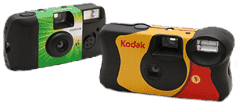
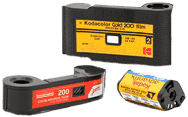
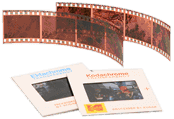




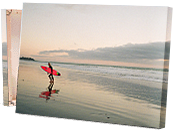

 Gift Cards
Gift Cards Film Index
Film Index FAQ
FAQ Desktop Framed Prints
Desktop Framed Prints